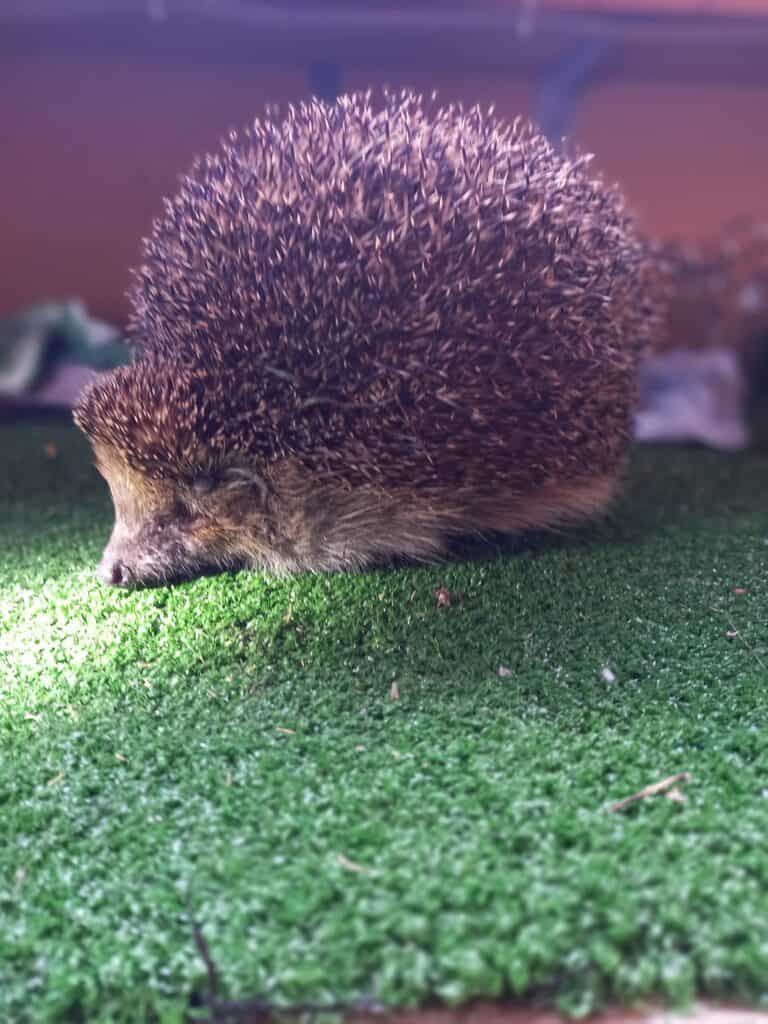Are you curious about Hedgehog Pet Balloon Syndrome?
I first became aware of this ailment when I took my pet for its regular examination. I met Sarah, who also keeps hedgehogs as pets, and witnessed her terror. This may sound amusing, but it is a severe sickness because it is awful to witness her pet suffers such agony. A permanent solution was found with the assistance of the veterinarian, and she was fortunate to have her pet back. I’d like to share what I’ve learned with you and invite you to read my post on Are Hedgehog Pets Easy To Take Care Of.
Let’s go,
What Causes Balloon Syndrome In Hedgehog Pets
Bacteria entering the wound and creating gas under the skin causes balloon syndrome in hedgehogs. Outwardly, such a hedgehog resembles a balloon, with its claws occasionally failing to reach the ground; the animal will simply suffocate if the gas is not released in time.
This is a life-threatening condition for the animal. Hedgehogs fall into shock and often die if not properly treated. This ailment is unique to hedgehogs due to their ability to coil up into a ball.
This indicates they have a lot of room beneath the skin. In rare cases, air becomes trapped behind the skin as a result of an accident or damage. In most cases, forceful trauma that causes damage to the lungs is the main cause of this disease
Hedgehogs have a short trachea that connects their mouth and nose to their lungs, with a head at the top that opens and closes when they breathe.
If the hedgehog is struck when the glottis is open, the air exits the lungs and the body. However, if it is shut, the air has nowhere to go and the lung tissue might break.
Tears in the lungs and rib muscles act as one-way valves, allowing air to exit the lungs and enter the body cavity but not return. As a result, with each breath the hedgehog takes a small amount of air escapes, causing the hedgehog to enlarge. A stressful experience might potentially produce balloon syndrome
In as much as scientists believe that an injury or illness is to blame for this disease, it is speculated that the elasticity of the hedgehog skin, which allows them to coil up, may have contributed to the development of the condition
10 Ways You Can Tell If Your Hedgehog Pet Has Balloon Syndrome
- There will be the production of inflammatory gas beneath the skin.
- The skin is severely inflated and stretched tight
- When caressed, the hedgehog’s quills, which are typically all bristling, generate a crinkling sound
- When tapping your pet’s skin, it produces a sound similar to that of an inflated balloon.
- If your hedgehog pet is female, you may initially believe she is pregnant.
- Breathing appears complex and constrained.
- Air may be present beneath the skin, potentially as a result of respiratory system injury.
- The hedgehog may look twice its regular size and feel light despite its apparent bulk.
- The hedgehog may scratch more frequently than normal.
- They cannot move, much less eat or drink, and breathing is difficult due to inside pressure.
Ways To Treat Balloon Syndrome In Hedgehogs Pets
- Gas will be released by placing a needle from a syringe under the animal’s skin and allowing the gases to escape. If the gas builds up under the hedgehog’s skin, it is softly perforated, and the animal is given medical care. The procedure takes around five minutes. The hedgehog returned to its normal size after that. Using a scalpel to make an incision on the hedgehog’s back can also be an option. The hedgehog should be deflated repeatedly at least 3 to 4 times before enjoying a full recovery
- Hedgehog will be x-rayed. An X-ray is essential since it will rule out any underlying injuries.
- Antibiotics and anti-inflammatory pain relievers are administered. Broad-spectrum antibiotic coverage is essential, and precautions must be taken to avoid accidental infection.
The hedgehog should be able to roll up in a ball and his breathing should be much better after 30 minutes of inflating him, the pet should be checked every hour for the next 24 hours
Because balloon syndrome is a rare disease, more updates will be given from time to time
Conclusion
It should be highlighted that balloon syndrome is a subsequent problem to either a serious internal illness causing gas to build up or damage to the respiratory tract. Whatever the situation may be, after fixing the balloon issue, it is prudent to do a complete examination of your hedgehog’s internal organs and provide it with the required medication so that it does not die. I’d want you to read my post, What Do Hedgehog Pets Eat And Drink since it will provide you with the best alternatives for feeding your pet for them to live a healthy, long life.

